Passing Time: JUNGLE FEVER
Spike Lee's mastery of visual language
Take a good look at how this series of short scenes from Spike Lee’s Jungle Fever depicts the passing of time as Flipper (Wesley Snipes) and Angie (Annabella Sciorra) get to know each other.
It’s not a montage, there’s no text on screen, no visuals of calendars or clocks or other usual signifiers. Everything within the shots tells the story, using framing and blocking, transitions, wardrobe, and props.
Shots and Transitions
Framing and Blocking
The shots start in medium singles, then Flipper and Angie get literally closer and closer, mostly in clean singles with occasional shared-frame two-shots.
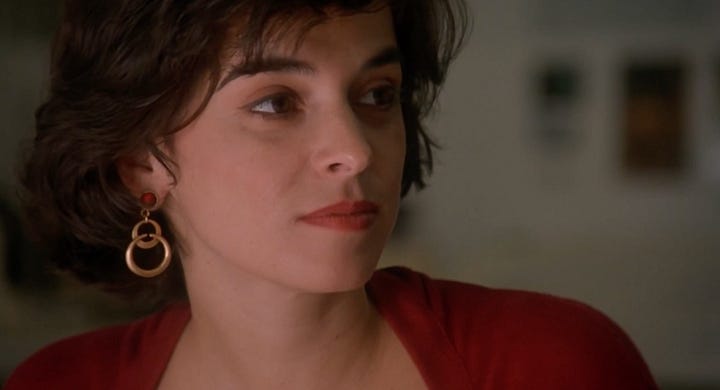
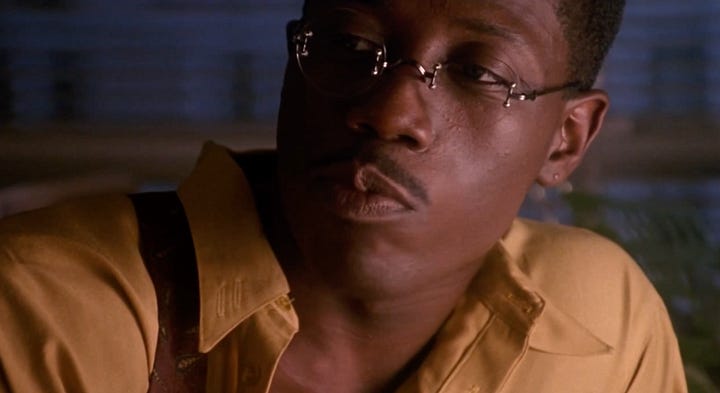
The presumption is these aren’t consecutive nights, but nights scattered over at least a few weeks as the two grow closer figuratively the same way they are literally.
This goes on until yet another night is established with the shot below.
So far Flipper has been Frame Right and Angie Frame Left, but the crossfade reverses them. The switch indicates a shift in their situation, while hinting how comfortable they are together.
This frame is so intimate, full of darkness and shadow and hard-to-read expressions, we know Flipper and Angie aren’t just comfortable, they’re considering an affair.
When the scene moves into closeups, instead of cutting between still shots as with the scenes before, the camera gently moves between them, increasing the feeling of tension and intimacy.
The will-they/won’t-they can also be found in their silhouettes, which look like the vase-or-face optical illusion.
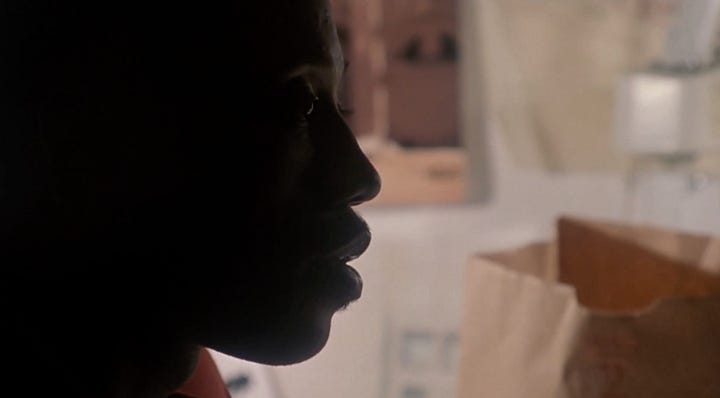

Transitions
Why is a choice of crossfade or fade-to-black-and-quickly-back-in-again better than a hard cut in this case?
Two reasons: to ease any confusion, and intimate time passing.
The audience wouldn’t be technically confused with a ‘hard cut,’ as the scene fades out on one character an in on another, and most elements within the frame change. But there’s a difference between ‘the audience would quickly figure it out’ and ‘minimising friction in the audience experience.’ The crossfade ensures the latter, clearly signalling time fading out and back in.
The exact amount of time is nebulous; all we need to know is some time has passed.
Wardrobe and Props
Colour and Accessories
Flipper and Angie’s outfits remain within their respective styles, but each undergo drastic changes in colour and pattern.
Things like earrings (especially larger dangling jewellery) and untied bow ties (hot! as well as signalling ‘after office hours’) are inherently noticeable in shots this close, so even just those changing is a big sign, but the colours also shift.
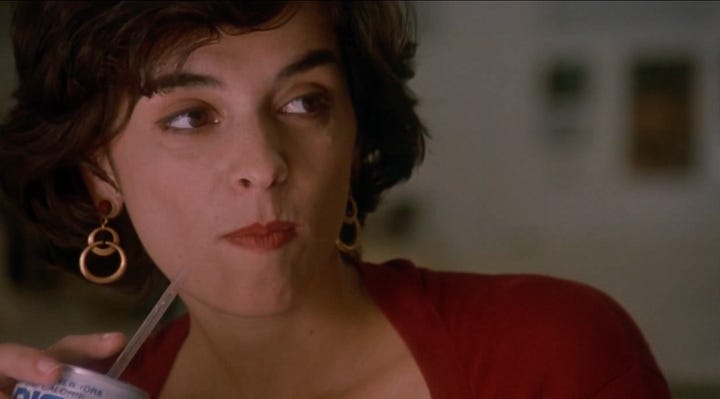

Note Flipper uses chopsticks and eats finger food right-handed, meaning we rarely see his wedding ring after that first scene; this would definitely be something considered as director storyboards, then walk throughs of the scenes and lens choices and shot sizes with DP and actors.
Props
The cuisine changes every time in noticeable ways; you’re not mistaking Chinese takeaway cartons for sushi. This gives commentary on New York multiculturalism (a big theme of the film), but also works as great visual shorthand.
The order of cuisines is also important! It’s not an arbitrary “three different foods, pick one for each.”
No, the two start chatting, then move to eating and drinking with chopsticks and a straw, and finally eating with their fingers (which as we know from Ingrid Bergman in Notorious is the sexiest way to eat dinner).
I mean . . .

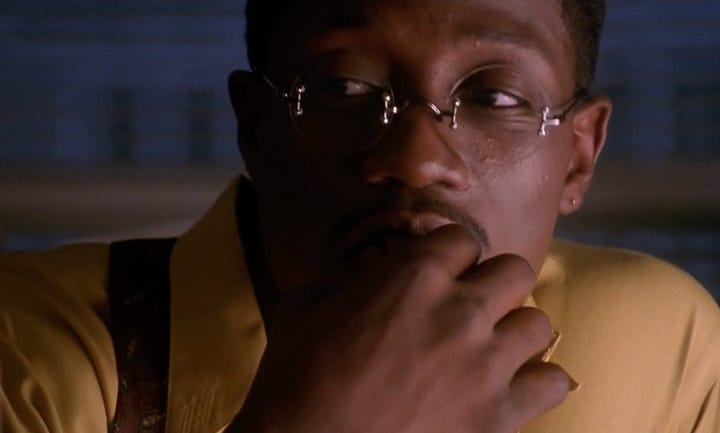
The last food is involves plastic forks, but by the time the scene starts they’re done eating; dinner is more a pretext than anything. So while we see the food on the drafting table, they don’t actually need to eat on screen.
All these are important considerations, and clearly Lee is communicating well with every department.
Takeaways
This is a perfect five and a half minutes where ‘nothing happens’ — two people talk and eat dinner, the end.
But none of it is boring or unclear (or uninteresting, but that’s more a ‘writing and performing’ note, not a ‘shots’ note).
Practical Applications: A Solve
Lee is a master, and by this his sixth feature he surely planned the beats of this scene to a Tee.
But just for a moment, game something out with me.
You’re in post-production on a film. For whatever reason — the story isn’t working, you aren’t happy with some of the inbetween scenes, you had to drop pages during production, the producers insist you cut twenty minutes — you need to drastically reorder the narrative and/or cut runtime.
You’ve shot three scenes in the office, set several days apart, which are dotted through the film. You can put them together, but they may still feel a little awkward to cut between.
You could put in an establishing shot.
You could re-shoot some expositional moments where Flipper is on the phone to his wife saying “I have to work late again” or Angie comes in talking about “ugh three months of this job and I’ve still yet to find the best sushi near work.”
OR you could use something like the technique of crossfading, and show-not-tell.
Voilà.






